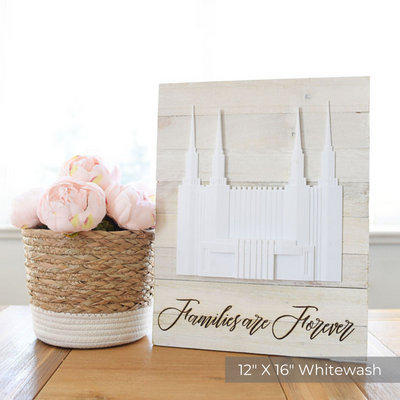How to Teach “I Love to See the Temple” Primary Song
By Kerry Griffin Smith
As grownups, we all know the beloved Primary song, “I Love to See the Temple,” by heart. Most of our children do too. We sing the first verse without missing a word or a beat, but when we get to the second verse, things tend to get a little fuzzy. Somehow we end up wading through it all but aren’t necessarily sure of the words unless the music leader is right there to guide us.
Perhaps we’ve just never taken the time to really think it through and understand how the song is laid out. It’s quite simple.
If you’re the music leader for your Primary or a parent at home who wants to help children understand this song better and sing it effectively, here are a few tips and guidelines for teaching “I Love to See the Temple,” with a focus on the second verse.

Use Actual Pictures
The church has plenty of images you can use to show the interior and exterior of various temples. You probably already have some in your home you can use. If not, click here to find one option from the church’s official website.
Verse One: Temple Exterior
The first verse talks about seeing the outside of the temple and making it a goal to attend someday. It’s a beautiful place where we can feel the Holy Ghost, pray, and listen for answers. We prepare ourselves while we’re young to worship in the temple when we’re of age to enter.
Invite discussion as you talk about the first verse. What does it mean to your Primary children or your child at home? What do they understand as they sing or say the words?
If they understand the first verse, which many are already singing and enjoying, quickly focus on teaching the second verse.
Verse Two: Temple Interior
Since both verses start with the same words, “I love to see the temple,” many singers are on autopilot when they try to complete the rest of the sentence for verse two. In fact, repeated wording throughout seems to confuse many when the lyrics change.
After showing some pictures of a temple interior, talk about how we can remember the second verse by thinking of the inside of a temple.
“I’ll go inside someday:” that’s the goal. The words are similar to the previous verse, “I’m going there someday.” Show the difference and practice the new words a few times.
Since we sing this song throughout our lifetime as church members, explain that each of us can remember this second verse better if we don’t rely on our music leader and his or her pictures to guide us. Instead, we can use a hand action to prompt us and help us remember the words.
Try the following hand-action suggestions, or come up with your own:
- Temple hands. Place both hands together, palms facing each other, as if you were going to pray. Explain that your hands represent a temple. Open both hands simultaneously while your thumbs continue to touch. Your palms should face the children. Tell them this represents the inside of a temple. Now practice singing the first sentence with the hand motion.
- Crossed hands over heart. Next, we focus on the words covenant and obey. Talk about what those mean. Let the idea settle in for a minute. Then show a correlating hand action to solidify the teaching. I’ve seen leaders touch their ring finger to remind children of the covenant of marriage. That’s one idea, and it might be something you’d like to share. I always felt it was a bit materialistic, though not a bad idea. Another option to consider is crossing both wrists over the heart, with fisted hands. Try your preferred hand position as you sing the second sentence together a couple of times.
- Interlocking fingers. Since repeat words from the previous verse have already formed a pattern in our minds, we have to focus on the words “holy place.” I suggest bringing hands together again in a prayer pose while saying “holy place,” and interlocking the fingers of both hands to suggest the words “sealed together.” Try this motion as you sing the next sentence with the children.
- Point to self. Sing “As a child of God,” point to self, “I’ve learned this truth,” point to mind. “A family is forever” suggests outstretched hands.
Compare the Verses
In addition to using hand positions, in the initial teaching of the verse, you can invite older children to help you find all the words that rhyme. Help them identify the pattern, and talk about the order in which we do things. For instance, first we pray, as mentioned in verse one, then in verse two we promise to obey. You could also point out that together and forever are near rhymes and when we sing those words, they sound like they match.
Of course, there’s no right way to teach this song. If you know sign language, you might add some of the signs if they help children to remember the words. The point is to teach the second verse using something the children will always have with them: their bodies. Adding simple hand movements, a part of kinesthetic learning, is an effective way to solidify new information in our minds.
When singing the song, try to make it a habit to sing both verses. Oftentimes, we just sing the first. Familiarity and regular practice will help ensure this beloved Primary song is sung with the correct words. More importantly, the beautiful message of the lyrics will be shared and penetrate young minds and hearts.
Kerry Griffin Smith is a former editor for the Ensign Magazine who loves to spend time in the temple and enjoys family history work. Discover her digital educational printables and articles at MrsLadyWordsmith.com.











Leave a comment